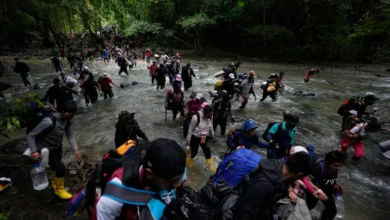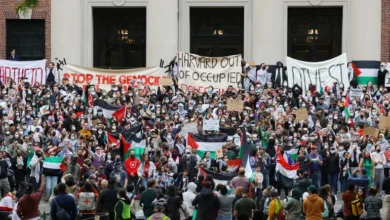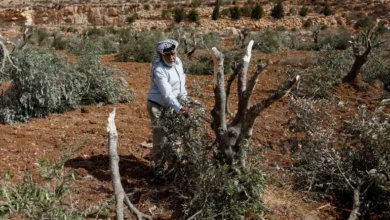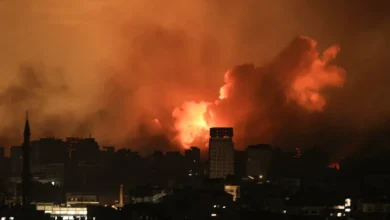Walking to America
Belén Fernández
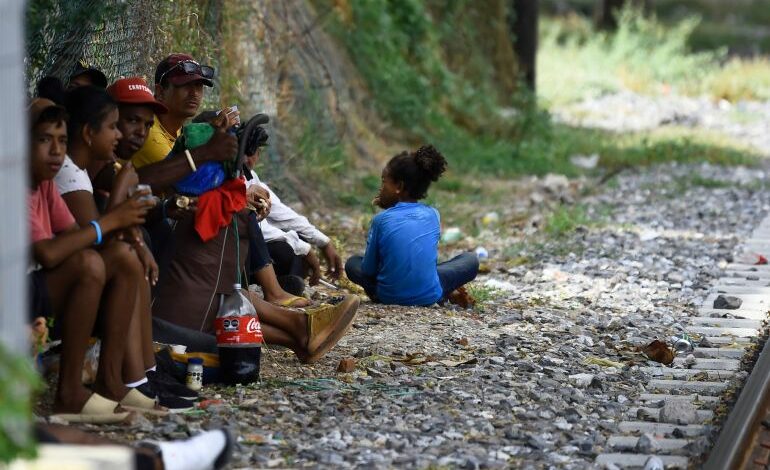
Belén Fernández
The isthmus of Tehuantepec, the narrow strip of land that separates the Gulf of Mexico from the Pacific Ocean in the southern Mexican state of Oaxaca, is known for its spectacularly fierce winds, which have toppled many a cargo truck navigating its thoroughfares. The isthmus is currently also playing host to mass human movement, as refuge seekers from Central America to Africa and beyond navigate the landscape in the hopes of eventually reaching the United States, still some 2,500 kilometers (1,550 miles) to the north.
And for these thousands upon thousands of humans in precarious transit, overpowering winds are but one of myriad existential obstacles.
I recently spent a few days in the isthmian town of Juchitán and took a taxi out to the nearby village of Santo Domingo Ingenio, where I met up with a 10-member Venezuelan family whose acquaintance I had made in early November in the neighbouring state of Chiapas, which borders Guatemala. Driving up the highway from Juchitán, the taxi lurched in the wind as we passed staggered groups of people heading in the opposite direction, some carrying babies or pushing strollers, others shielding their faces from the punishing sun overhead.
The family had joined up with the latest northbound migrant caravan to form in Mexico – although the caravan has since largely dissolved in accordance with divide-and-conquer tactics of the Mexican government and mafia outfits, which jointly profit from the United States’s criminalisation of migration. Lacking any money for food – much less to avail themselves of mafia-organised transport options or the inflated “migrant prices” unofficially implemented by Mexican bus companies – this family belongs to the class of refuge seekers that has basically been reduced to walking to America.
The extended family’s youngest member is an eight-year-old boy; there are also two 13-year-olds, a boy and a girl. I brought them some cash, water, and a heap of fried chicken from Juchitán, and we sat on the sheet of plastic that was serving as their bed in Santo Domingo Ingenio’s central pavilion, where the caravan was meant to camp out for the night.
They filled me in on all that had transpired since our last meeting in Chiapas, which included having various objects thrown at them by apparently xenophobic local residents and being forcibly separated by Mexican immigration officials. Thanks to this sadistic stunt by agents of the state, who bused the children and one of the women to an unspecified location hours away from the others, the family spent several sleepless nights before being able to regroup.
Most of the family members could barely walk, the soles of their shoes and feet having been torn up by hours of contact with the scorching pavement. One of the women laughingly showed me her innovative solution to the gaping holes in the bottom of her pink plastic clogs, which had been to utilise sanitary napkins as inserts. Somehow, they all maintained a distinct graciousness that, had I been in their shoes, would have certainly been long gone, pulverised somewhere on the road from Venezuela to Mexico.
At our previous encounter, the family had recounted their trek through the Darién Gap, the corpse-ridden stretch of jungle between Colombia and Panama, which they likened to “a horror movie”. In one scene, they said, they had investigated a hand sticking out from a tent along the way to find that it belonged to a dead pregnant woman inside.
The horrors of the jungle notwithstanding, the family reported that they would take the Darién Gap over Mexico any day. Hobbling, they escorted me back to my taxi, which was parked next to a couple of heavily armed, balaclava-sporting contingents of the Mexican National Guard, valiantly guarding the nation against asylum-seeking pedestrians.
Granted, US-bound migrant caravans have long elicited expediently sensational fear-mongering. When the first caravan set out from Honduras in 2018, then-US President Donald Trump took to Twitter to warn that “criminals and unknown Middle Easterners are mixed in” – a matter that amounted to a veritable “National Emergy[sic].”And while Trump’s successor, Joe Biden, was supposed to pursue a nicer and less sociopathic migration policy, the US remains on “National Emergy” footing as Biden unabashedly expands Trump’s border fortification vision. Obviously, the US also continues to be responsible for wreaking much of the international political and economic havoc that causes people to leave their countries in the first place.
For his part, Mexican President Andrés Manuel López Obrador (AMLO) has dutifully enlisted Mexico in the US war on asylum seekers, and recently praised Biden for allegedly refraining from building border walls – a curious compliment, no doubt, for someone who is building up a storm.
Meanwhile, back in Juchitán, collaborative state-mafia extortion is going strong, and refuge seekers with access to money are being milked for all they are worth. When two Danish friends and I visited a certain hotel in the centre of town, for example, we found it jampacked with citizens of the African nation of Mauritania, many of them fleeing political persecution and fear of torture back home. In the hotel lobby, two women seated at a table handled passports, stacks of one hundred dollar bills, and a credit card machine.
Out front, a man from the Mexican state of Sinaloa who was involved in coordinating the operation openly told my friends and me that the Mauritanians – who had entered Mexico without visas – were being bused from Juchitán to Mexico City for “about 10,000 pesos” per person, or nearly 600 dollars. The buses would not be stopped by Mexican immigration personnel, we were told, as the obscene bus fare presumably made it possible to pay off all the proper people and still have plenty left over.
The same night that I visited the Venezuelan family in Santo Domingo Ingenio, I received word from them that the caravan had been dislodged from the village and moved to one even farther away from Juchitán – meaning their trek to the US border would now be that much longer.
Two days later, they were still in the same village, where reports had begun to surface that caravan participants were being kidnapped and held for ransom. Petrified, the family was planning to separate from what remained of the caravan, and to face being blown over by the winds of the Isthmus of Tehuantepec on their own.

